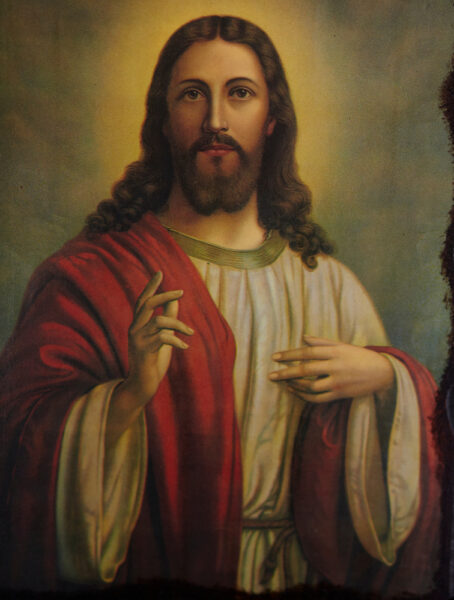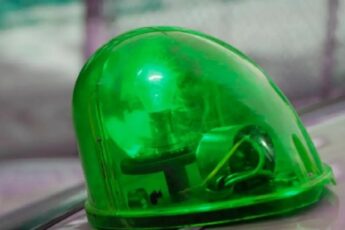Everyone has a conception of Jesus’s appearance, which has become one of the most replicated images in Western culture. Typically, he is depicted as a light-skinned man with long flowing hair and a beard, dressed in a cream-colored, long-sleeved robe.
His image is so ingrained in popular culture that people report seeing him in everyday items, from pancakes to toast, and even in a dish of Chicken Tikka Masala, as one New Yorker claimed to have found Jesus.
However, forensic experts argue that these common depictions of Jesus, whether encountered in food, the mind, or classical artworks, are likely inaccurate.
Countless artistic renditions of Jesus exist, yet his true appearance remains unknown.
Our collective image of Jesus Christ is heavily influenced by iconic works such as Leonardo da Vinci’s “The Last Supper” (1498), Michelangelo’s “The Last Judgement” (1541), and El Greco’s “Christ Carrying the Cross” (1540).
These cultural and artistic portrayals typically show Jesus as a long-haired, often blue-eyed man in a robe, with sandals visible on his feet.
However, the New Testament does not describe his physical appearance, and there are no skeletal remains or other physical evidence for DNA analysis to confirm his looks.
Despite this, experts now believe they have crafted a more accurate representation of the Son of God…

AI-created Jesus
A Dutch photographer and digital artist, Bas Uterwijk, employed advanced artificial intelligence to create a “historically accurate” depiction of Jesus. As an expert in algorithmic image synthesis, Uterwijk utilized a neural network that had been trained with thousands of human faces from photographs and paintings. His sources included Byzantine and Renaissance depictions, such as Leonardo da Vinci’s “Salvator Mundi” and the Turin Shroud, but he adjusted the features to better reflect a Middle-Eastern ethnicity.
Uterwijk mentioned that his portrayal of Jesus has become quite popular on Twitter, although he wasn’t initially credited. On September 1, 2020, he shared: “My Jesus portrait is going pretty viral on Twitter at the moment, without me being tagged so for everyone interested…”
He felt the initial results lacked historical authenticity, prompting him to modify the hair and beard to lengths and styles more typical of the era and region. Additionally, he incorporated elements from Fayum mummy portraits, diminishing the influence of Renaissance art.
Uterwijk concluded that the final image serves more as an artistic interpretation of how Jesus might have looked rather than a scientific attempt to pinpoint his exact appearance.
Forensic reconstruction
British forensic experts and Israeli archaeologists have crafted a 3D portrayal of Jesus Christ’s face, merging the study of Semite skulls with contemporary forensic techniques.
Dr. Richard Neave, author of “Making Faces: Using Forensic and Archaeological Evidence,” is renowned for his facial reconstructions of historical figures such as King Phillip II of Macedonia and King Midas. A retired medical artist and expert in forensic facial reconstruction, Neave led a team in Britain that applied forensic anthropology to envision how Jesus might have looked, producing an unexpected image.
The resulting depiction suggests Jesus may have had a broad face, dark eyes, short dark hair, a bushy beard, and tanned skin—traits typical of Galilean Semites from his time. This description aligns with an account from the New Testament’s Gospel of Matthew, which notes Jesus closely resembled his disciples.
Now affiliated with the University of Manchester, Neave stresses that the image represents a generic adult male from the same era and locale as Jesus. However, some specialists consider this representation to be more accurate than those found in classical artworks.
Analyzing data
The team undertook a meticulous process combining cultural and archaeological data with crime-solving techniques.
Israeli archaeologists provided three Semite skulls from the relevant period, which were then examined using computerized tomography, effectively “slicing” through them to reveal structural details.
Using software to estimate muscle and skin density, the experts created a digital 3D model of a face. They then produced a physical cast of the skull, over which they layered clay to simulate the facial tissues as determined by the calculations.
The final facial features, such as the eyes, lips, and nose, were crafted based on the predicted shapes of the skulls. Despite the detailed analysis, the skull studies couldn’t determine eye color or hair style.
Drawing on first-century artwork from archaeological digs predating the Bible, the team postulated that Jesus likely had dark eyes and, adhering to Jewish customs of the era, also sported a beard.
Guided by Biblical references, the team concluded that Jesus probably had short, tightly curled hair. A passage from Paul in the Bible suggests, “If a man has long hair, it is a disgrace to him,” leading to the conclusion that Jesus maintained shorter hair, contrasting with the long-haired figure in the Shroud of Turin, which emerged in 1354.
The team also estimated Jesus’s probable height and build using skeletal remains, suggesting he was about 5-foot-1 and weighed around 110 pounds.

Given his profession as a carpenter, it’s hypothesized he was well-tanned and muscular, more so than often depicted in Western art.
The updated depictions resonate more with the “Prince of Peace” painting by Akiane Kramarik, famously created after she envisioned Jesus in her dreams.
The findings, though intriguing, might unsettle those accustomed to traditional images of Jesus, such as the miraculous face appearing in Jeff Jordyn’s chicken tikka masala in 2022, highlighting the contrast between historical illustrations and accidental culinary depictions.
This story reflects the profound impact of combining science and technology to revisit historical figures’ portrayals, sparking discussions and potentially shifting perceptions of iconic religious imagery.
What are your thoughts on these new insights?







